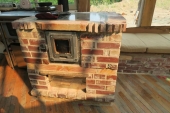Mark Deichmann wrote:It takes ash about 15 -20 years to reach a diameter of 4 inches at chest height. Keeping in mind that where you cut one tree you get 3-6 on average back. Its long term at best but a nice tree to manage and nice to look at too.
Depends on climate and growing conditions, also on age of tree/rootstock. Round here, it grows a lot faster than that, more like 10 years to 4" diameter, though personally I wouldn't want it to get that thick, especially for the first cut. Not only will it be a shock to the tree, but it's more work to cut and handle generally. Coppicing (or pollarding) is the way to go. An established rootstock cut down regularly will put on much more growth than a new sapling. Typical cycle times are given as 7-10 years, but it really depends on how many stems you leave, and how thick you want them.
I have one that was cut at waist height (long story) when it was about 3" at that height, about 10 years ago, it now has three main stems all 4" or slightly more at chest height, but then again, I know where there are some ash trees in a car park that have hardly grown at all in the last 12 years.
For BTU per acre per year SRC willow is the best, and can be burnt in a rocket stove/heater, but if you need logs, I reckon ash cut at 2-3" is the best. Cutting down on your energy requirements will make 'which wood is best to grow for burning' less of a concern and you can have more space for growing other things, even other trees with other uses. Rockets aren't fussy about what they burn and will burn sticks, so once you have one you really don't have to grow anything special for fuel, just enough to provide adequate quantities of prunings.












